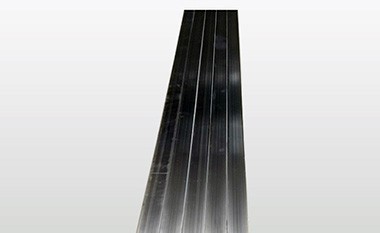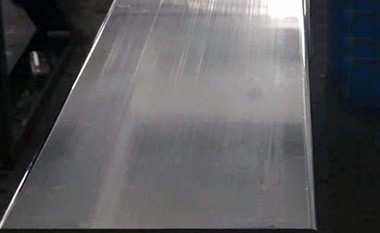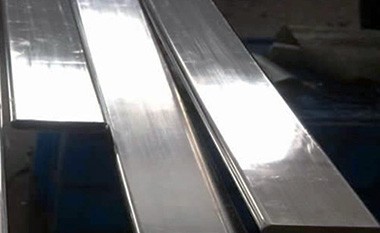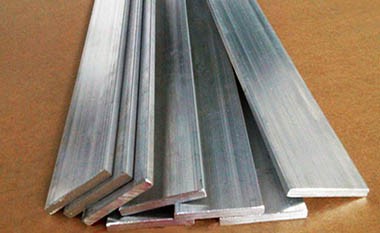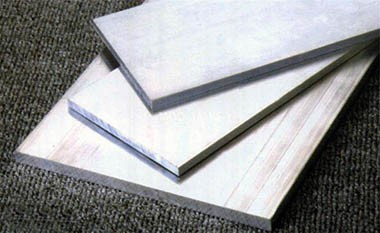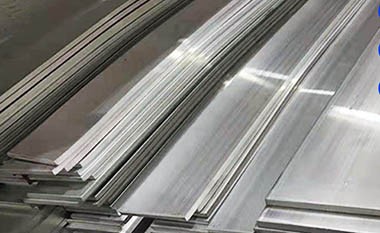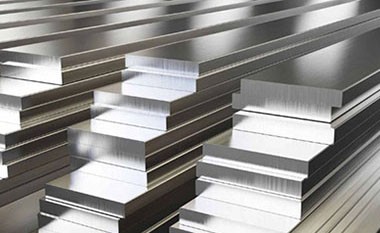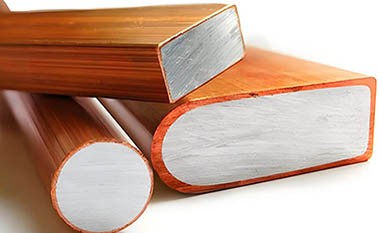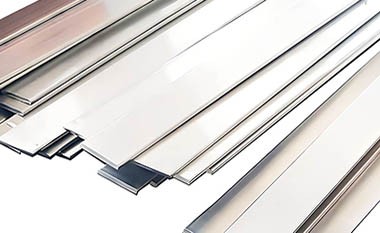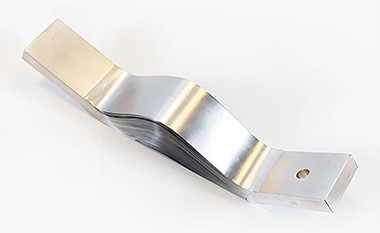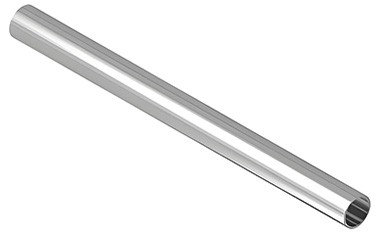1350 Electrical Aluminum Busbar
The 1350 electrical aluminum busbar is a high-purity aluminum alloy strip or rod used for efficient power distribution in electrical systems. 1350 aluminum belongs to the 1000 series and is highly favored for its excellent conductivity and lightweight properties.
The 1350 aluminum busbar is a high-purity aluminum conductor, widely used in electrical applications due to its excellent conductivity and mechanical properties. They are primarily used in power transmission and distribution systems, electrical equipment, and various industrial applications.
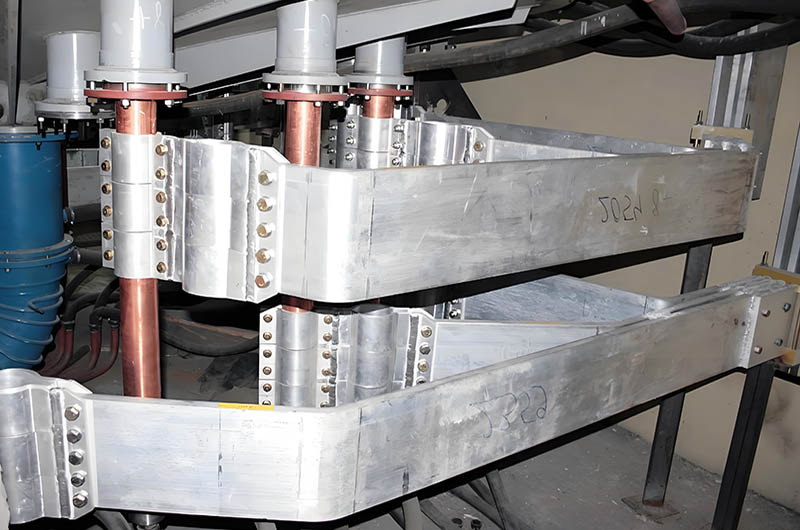
HC Aluminum 1350 EC grade aluminum busbars comply with ASTM B317, ASTM B236, IEC 60105, ISO 209-1, 2, DIN EN 755-2, and DIN EN 755-5:2008-06 standards. The 1350 aluminum busbar has outstanding conductivity, high strength, good corrosion resistance, and a lightweight design.
Advantages of 1350 Electrical Aluminum Busbar
| Advantages | Description |
| High Conductivity | The 1350 aluminum busbar has excellent conductivity, which allows for efficient power transmission and significantly reduces energy loss caused by resistance. Compared to other commonly used metals, 1350 aluminum busbars play a crucial role in electrical systems. Its high conductivity not only enhances system efficiency but also ensures stable performance under high current loads, maintaining the reliability and stability of power transmission. |
| Lightweight | The 1350 aluminum busbar is much lighter than copper and other materials, making it more versatile in electrical transmission systems. The lighter weight reduces the overall load on the structure, easing the installation and transportation processes. Additionally, due to its low density, aluminum busbars are easier to handle during processing, and can also reduce the strength requirements for supporting structures, thereby lowering project costs. |
| Cost-Effective | Compared to copper, the 1350 aluminum busbar is more economical, especially in large-scale power transmission and distribution systems. Aluminum busbars not only have a lower purchase cost, but their processing and installation costs are also relatively lower. Therefore, for projects requiring large quantities of materials, adopting 1350 aluminum busbars can significantly reduce overall costs, providing a higher cost-performance ratio, which is particularly important for large projects with limited budgets. |
| Recyclability | The 1350 aluminum busbar has excellent recyclability, as 100% of aluminum can be recycled without any loss of performance. Its recycling process has a minimal environmental impact and contributes to sustainable development goals. As global awareness of environmental protection and resource recycling increases, aluminum busbars, as recyclable materials, meet the growing demand for green and eco-friendly solutions in modern energy and construction fields. This also helps reduce resource waste and supports ecological balance. |
Specification of HC Aluminum 1350 electrical busbar
| EC 1350 aluminum busbar specification | |
| Width Range | Ranges from 10 mm to 200 mm |
| Thickness Range | Ranges from 0.15 mm to 40 mm |
| Length Range | Lengths can extend up to 6 meters |
| Tolerance | Tolerances are specified by standards such as ASTM B236 |
| Current Capacity | Depends on the cross-sectional area; larger sizes compensate for lower conductivity compared to copper |
| Temperature Range | Typically -40°C to 90°C; derating is required at higher ambient temperatures |
| Temper | H14, H16, H19 |
| Requirements for surface quality | Smooth surface without defects such as burrs and spots; The surface is clean, dust-free, oil-free, and free of other impurities; The oxide layer is uniform, dense, and has good corrosion resistance; |
| Surface treatment | Anodizing, electroplating, spraying, etc. Usually aluminum plating includes: silver, tin, nickel |
| Insulation treatment | Insulation coating: powder coating, epoxy resin coating or insulation paint coating, etc. Insulating sleeve: polyvinyl chloride (PVC), heat shrink tubing, or silicone rubber, etc. |
| Product packaging | When delivering according to length, it should be packaged in bundles and boxes, and when delivering according to quality, it should be packaged in discs, circles, or bundles. |
| Test | Conductivity test, temperature rise test, bending test, etc. |
| Standard | ASTM B317, ASTM B236, IEC 60105, ISO 209-1, 2, DIN EN 755-2, DIN EN 755-5:2008-06 |
1350 aluminum busbar Standards
1350 aluminum busbars conform to various international standards, including:
- ASTM B236: Standard Specification for Aluminum Bars for Electrical Purposes (Bus Bars).
- IEC 60105: International standard for aluminum conductors.
- ISO 209-1, 2: Standards for aluminum and aluminum alloys.
These standards ensure the quality and reliability of aluminum busbars in electrical applications.
1350 aluminum busbars are essential components in electrical systems, offering a balance of high conductivity, mechanical strength, and cost-effectiveness, making them suitable for a wide range of applications.
Advantages of 1350 Aluminum Busbar Compared to Copper
| Advantage | Description |
| Cost-Effectiveness | The material cost of 1350 aluminum busbar is significantly lower than copper, especially in large-scale applications. The raw material price of aluminum is generally cheaper than copper, and the production and processing are relatively simpler, giving aluminum busbars a significant competitive advantage in terms of cost. For electrical systems that require a large amount of busbar, using 1350 aluminum busbar can significantly reduce the overall material cost of the project, thereby improving the cost-performance ratio. |
| Lightweight | The weight of 1350 aluminum busbar is much lighter than copper, with aluminum's density being about one-third of copper's. The lighter weight makes aluminum busbars more advantageous in terms of transportation, installation, and system support structure design. It reduces the load on the equipment and the demand for supporting structures, lowers the overall weight of the power transmission system, simplifies the installation process, and reduces the strength requirements of supporting materials. |
| Corrosion Resistance | The 1350 aluminum busbar has good corrosion resistance in non-marine environments. The natural oxide layer formed on the surface of aluminum can effectively prevent corrosion, especially in dry and warm environmental conditions. While aluminum's corrosion resistance is slightly inferior to copper, 1350 aluminum busbars provide sufficient protection for most industrial applications, reducing maintenance costs and replacement frequency. They are particularly suitable for non-marine and drier regions. |
Characteristics of 1350 Aluminum Busbar
- High Conductivity: The electrical conductivity of 1350 aluminum alloy typically ranges between 61-63% IACS (International Annealed Copper Standard), providing excellent conductivity in electrical applications.
- Lightweight: Compared to copper conductors, the density of aluminum busbars is about one-third that of copper, effectively reducing the overall weight of the equipment, making it easier to install and maintain.
- Good Corrosion Resistance: The natural oxide layer that forms on the surface of 1350 aluminum effectively resists oxidation and corrosion, extending the lifespan of the busbar.
- Excellent Machinability: 1350 aluminum alloy has good ductility and weldability, making it suitable for various processing methods, including bending, welding, and cutting.
- Lightweight: The low density of aluminum makes aluminum busbars lighter than copper busbars, reducing the burden on installation and supporting structures.
Chemical composition of HC Aluminum 1350 conductive aluminum busbar
| Element | Symbol | Typical Percentage (%) |
| Aluminum | Al | 99.5 - 99.9 |
| Copper | Cu | 0.05 - 0.20 |
| Iron | Fe | 0.10 - 0.30 |
| Silicon | Si | 0.05 - 0.20 |
| Manganese | Mn | 0.05 - 0.20 |
| Magnesium | Mg | 0.05 - 0.20 |
| Zinc | Zn | 0.05 - 0.20 |
| Titanium | Ti | 0.05 - 0.15 |
| Other Elements | - | < 0.05 each |
Applications of 1350 Electrical Aluminum Busbar
The 1350 electrical aluminum busbar, with its excellent conductivity, lightweight nature, and corrosion resistance, is widely used in power distribution and electrical connection fields.
| Application Area | Detailed Description |
| Power Distribution Systems | The 1350 aluminum busbar is widely used in high-voltage and low-voltage distribution systems as the main carrier for power transmission and distribution, ensuring efficient energy transfer. |
| Power Electronics and Communication Systems | In power electronics and communication systems, the 1350 aluminum busbar provides a stable power supply, supporting the normal operation of various electronic devices. |
| Industrial Electrical Equipment | Suitable for electrical installations in large industrial facilities, aluminum busbars are used for power supply and distribution, supporting the efficient operation of various machines and equipment. |
| Power Tools | In power tools, aluminum busbars serve as power connection components, ensuring efficient power supply and safe operation of the tools. |
| Automotive and Aerospace Electrical Systems | In the automotive and aerospace sectors, the 1350 aluminum busbar is used for power transmission, supporting the functionality and performance of various electrical systems. |
| Renewable Energy | In fields such as solar energy, wind energy, and new energy vehicles, aluminum busbars are used for effective power transmission, supporting the application of renewable energy sources. |
| Industrial Automation | In industrial automation equipment, aluminum busbars act as connection conductors for power and control systems, supporting the efficient operation of automated production lines and enhancing productivity. |
| Transportation | In electric vehicles and rail transit systems, the 1350 aluminum busbar is widely used for power transmission, ensuring the reliable operation of electric transportation. |
| Building Electrical Systems | In commercial and residential buildings, aluminum busbars can be used in power wiring systems to meet power supply demands and improve the performance of electrical systems in buildings. |
Manufacturing Process of 1350 Aluminum Busbar
The manufacturing process for 1350 aluminum busbars typically includes the following steps:
- Aluminum Melting: High-purity aluminum ingots are melted in a furnace.
- Casting and Extrusion: The molten aluminum is cast into bars or plates, and then extruded into busbars.
- Surface Treatment: Anodizing or coating treatments are applied to enhance corrosion resistance and aesthetics.
- Cutting and Shaping: The busbars are cut to the required length and undergo bending and shaping as per customer specifications.
Design and Installation
- Shape/Size: Rectangular or flat strips; custom sizes available (Thickness: 3–12 mm, Width: 20–200 mm).
- Surface Treatment: Bare, tinned, or anodized to reduce oxidation and improve contact resistance.
Installation Tips:
- When connecting to copper, use anti-oxidation compounds to prevent electrochemical corrosion.
- Ensure the bolt torque is appropriate to maintain low-resistance connections.
- Allow for thermal expansion (aluminum expands about 30% more than copper).
The 1350 electrical aluminum busbar provides an economical, efficient, and lightweight solution for high-current distribution. Its high conductivity and adaptability make it the preferred choice in industrial and renewable energy sectors, but proper installation and maintenance are crucial to maximizing performance.

